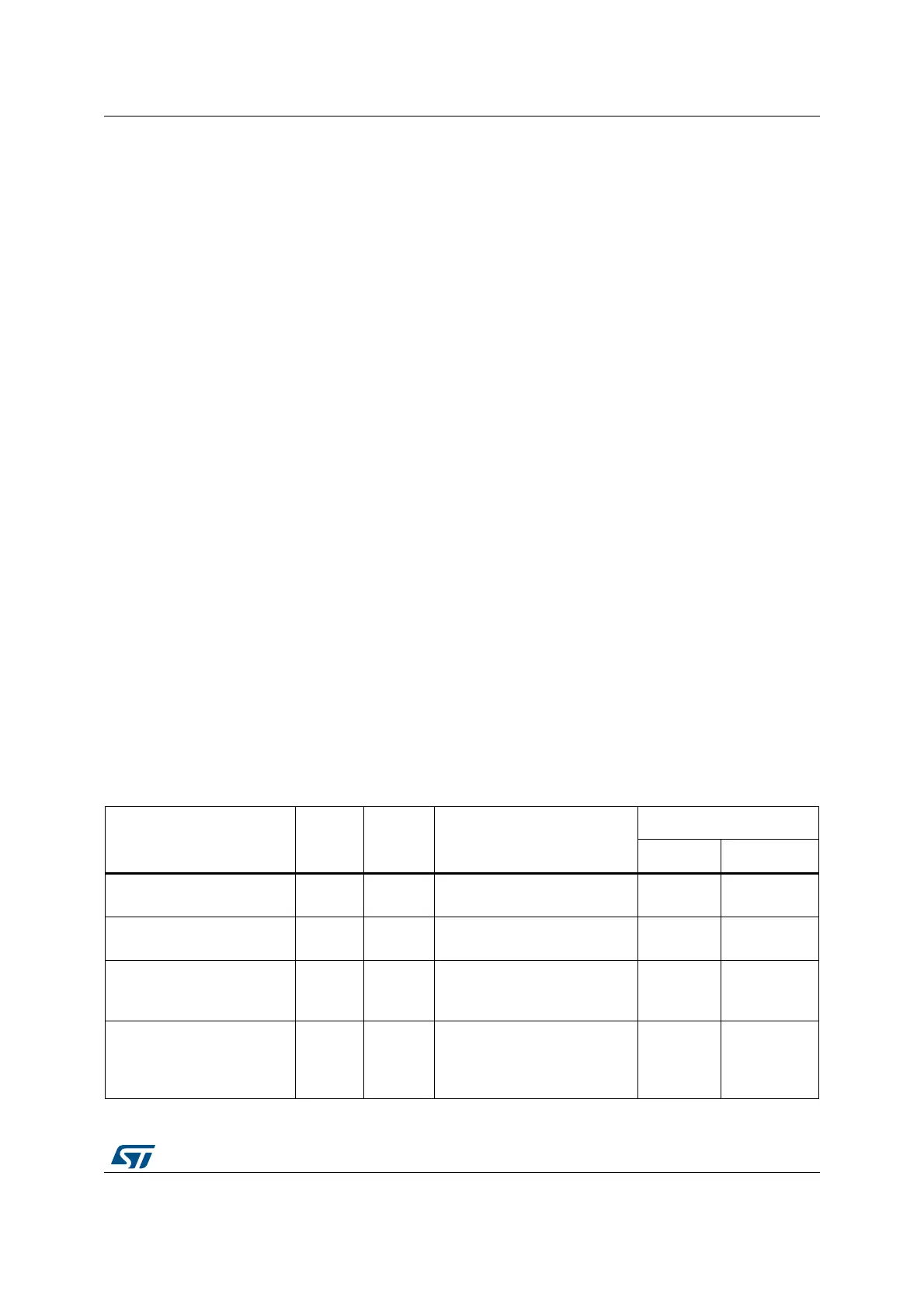RM0440 Rev 4 1707/2126
RM0440 Low-power universal asynchronous receiver transmitter (LPUART)
1733
Determining the maximum LPUART baud rate that enables to correctly wake
up the MCU from low-power mode
The maximum baud rate that enables to correctly wake up the MCU from low-power mode
depends on the wakeup time parameter (refer to the device datasheet) and on the LPUART
receiver tolerance (see Section 38.4.8: Tolerance of the LPUART receiver to clock
deviation).
Let us take the example of OVER8 = 0, M bits = ‘01’, ONEBIT = 0 and BRR [3:0] = 0000.
In these conditions, according to Table 353: Tolerance of the LPUART receiver, the
LPUART receiver tolerance equals 3.41%.
DTRA + DQUANT + DREC + DTCL + DWU < LPUART receiver tolerance
D
WUmax
= t
WULPUART
/ (11 x T
bit Min
)
T
bit Min
= = t
WULPUART
/ (11 x D
WUmax
)
where t
WULPUART
is the wakeup time from low-power mode.
If we consider the ideal case where DTRA, DQUANT, DREC and DTCL parameters are at
0%, the maximum value of DWU is 3.41%. In reality, we need to consider at least the
lpuart_ker_ck inaccuracy.
For example, if HSI16 is used as lpuart_ker_ck, and the HSI16 inaccuracy is of 1%, then we
obtain:
t
WULPUART
= 3 µs (values provided only as examples; for correct values, refer to the
device datasheet).
D
WUmax
= 3.41% - 1% = 2.41%
T
bit min
= 3 µs/ (11 x 2.41%) = 11.32 µs.
As a result, the maximum baud rate that enables to wakeup correctly from low-power
mode is: 1/11.32 µs = 88.36 Kbaud.
38.5 LPUART interrupts
Refer to Table 348 for a detailed description of all LPUART interrupt requests.
Table 355. LPUART interrupt requests
Interrupt event
Event
flag
Enable
Control
bit
Interrupt clear method
Interrupt activated
lpuart_it lpuart_wkup
Transmit data register empty TXE TXEIE
TXE cleared when a data is
written in TDR
YES NO
Transmit FIFO Not Full TXFNF TXFNFIE
TXFNF cleared when TXFIFO
is full.
YES NO
Transmit FIFO Empty TXFE TXFEIE
TXFE cleared when the
TXFIFO contains at least one
data or by setting TXFRQ bit.
YES YES
Transmit FIFO threshold
reached
TXFT TXFTIE
TXFT is cleared by hardware
when the TXFIFO content is
less than the programmed
threshold
YES YES

